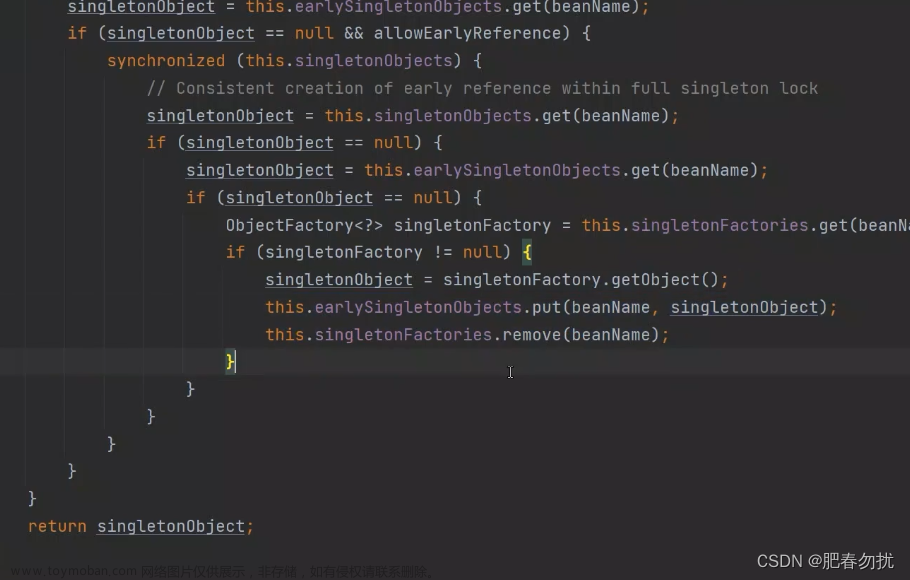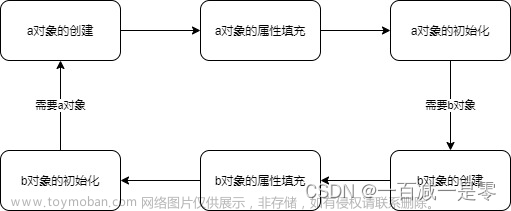1、springboot项目如何解决循环依赖
在生产项目中,可以使用Spring Boot框架来快速开发Spring应用程序。Spring Boot提供了一种方便的方式来创建独立的,基于Spring的应用程序,并且有着高度的自动化配置和开箱即用的特性。
可以使用@Lazy注解来控制Bean的延迟初始化,同时可以使用AOP切面编程来解决循环依赖问题。具体步骤如下:
1.1、添加@Lazy注解
在需要延迟初始化的Bean上添加@Lazy注解,使其在容器启动时不会实例化。
@Service
@Lazy
public class UserService {
@Autowired
private UserController userController;
// ...
}
1.2、使用@DependsOn,指定加载的顺序
在依赖被初始化前需要注入的Bean上使用@DependsOn注解来指定Bean之间的依赖顺序。
@RestController
@DependsOn("userService")
public class UserController {
@Autowired
private UserService userService;
// ...
}
1.3、 使用AOP来实现Bean的代理
使用Spring AOP来实现Bean的代理、懒加载,从而避免循环依赖导致的问题。其中,当被代理的Bean被调用时,Spring会先检查是否已经创建了该Bean的代理对象,如果存在,则直接返回代理对象,否则再进行实例化并返回。文章来源:https://www.toymoban.com/news/detail-501258.html
@Component
@Aspect
public class LazyInitAspect {
private Map<String, Object> singletonObjects = new ConcurrentHashMap<>();
@Around("@annotation(org.springframework.context.annotation.Lazy)")
public Object lazyInit(ProceedingJoinPoint joinPoint) throws Throwable {
String beanName = joinPoint.getSignature().getDeclaringType().getSimpleName();
Object singletonObject = singletonObjects.get(beanName);
if (singletonObject != null) {
return singletonObject;
}
synchronized (this.singletonObjects) {
singletonObject = singletonObjects.get(beanName);
if (singletonObject == null) {
singletonObject = joinPoint.proceed();
singletonObjects.put(beanName, singletonObject);
}
return singletonObject;
}
}
}
以上是基于Spring Boot项目使用@Lazy和AOP解决循环依赖问题的一种方式。需要注意的是,循环依赖会导致Bean的初始化顺序变得复杂,因此在设计应用程序时需要避免过度的复杂性。文章来源地址https://www.toymoban.com/news/detail-501258.html
到了这里,关于生产项目中基于springboot项目解决循环依赖的三种方式的文章就介绍完了。如果您还想了解更多内容,请在右上角搜索TOY模板网以前的文章或继续浏览下面的相关文章,希望大家以后多多支持TOY模板网!











